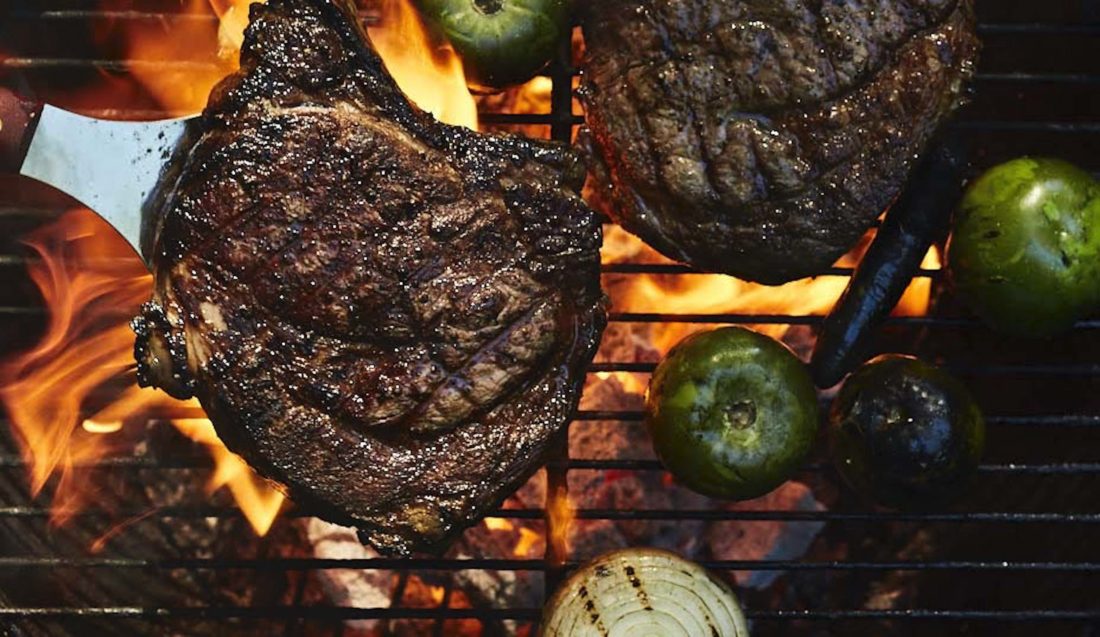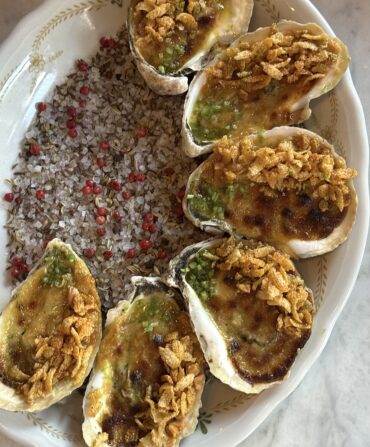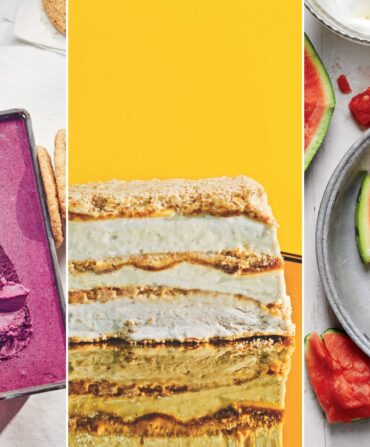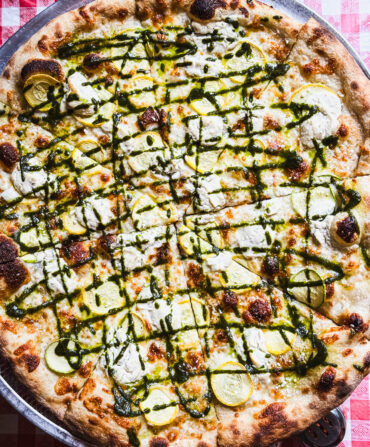We’ve still got a bit of winter left here in the South, so now’s the time to make the most of every last chance to (safely) gather around the fire with friends, family, and, of course, food. While roasting anything more complicated than a weenie over an open fire may sound intimidating, it can actually be an easy, low-fuss endeavor, according to Chris Hastings, the executive chef and owner of Ovenbird and Hot & Hot Fish Club in Birmingham, Alabama. “I think one of the things I love about it is that it has to be casual,” he says. “It’s not the time to pull out the linens and all of that.” Whether you have a DIY circle of stones topped with a grate, or a fire kettle with fancy attachments that help fine-tune the cooking process, here’s how you can pull off an open-fire meal like a pro.
Step 1:
Establish the Fire Early
“The biggest mistake people make when cooking over open fire is that they don’t tend to their fire,” Hastings says. “A fire is a living thing; it undulates up and down depending on how you manipulate it. You have to have an intimate relationship with your fire.” Steve Schoettle, the owner of Sea Island Forge fire kettles, agrees that making sure your heat distribution is just right takes time. He recommends starting your fire one to two hours before you plan to start cooking in order to build a substantial bed of coals.
Step 2:
Tame the Flame
While it’s tempting to have a roaring fire, it’s not ideal for cooking. “I like to mix in mesquite charcoal with smaller pieces of wood to revive the fire without smoke,” Hastings says. “Big logs are sexy for a bonfire, but smaller sticks and charcoal are what you want for cooking.”
Step 3:
De-gunk Your Cooking Surface
A grimy grate will affect taste, and also cause your food to stick. Before he starts cooking, Hastings always scrapes off any large chunks remaining on the surface from previous use, then wipes the surface down with a dry cloth before rubbing on some vegetable oil.
Step 4:
Give One of These Dishes a Try
Whole Cooked Fish: “This is the greatest simple meal of all time,” Hastings says. The fish should be scaled and gutted (be diligent in making sure the bloodline is removed). The chef likes to stuff the fish (flounder and pompano are his go-tos) with lemon and herbs. Then let it sizzle on your surface, resisting the urge to flip too soon. “Don’t force it when it’s sticking,” he says. “Wait and it will release itself when it’s properly seared.” To gauge doneness, Hastings sticks a cake tester into the thickest part of the fish. “If I feel tension on the cake needle, I know that the fish is a little rare,” he says. “If you’re not sure, touch that needle below your lip. If it feels cool, the fish needs more time. If you feel heat, that a good sign it’s done all the way through.”
Paella: For Hastings, paella is the ultimate one-pot dish to make over open fire. “It’s a wonderful process, and great for big groups,” he says. Of course, you’ll need a vessel—a traditional large, shallow paella pan with handles—in which to brown your rice and distribute your layers of flavor (use whatever fresh seafood and vegetables are in season). Have all of your ingredients measured and prepped before your guests arrive, so all you have to do is add them to the pan while tending to your fire and enjoying the company. The key to this fireside dish is not to fuss with it too much. You want that thin, bottom layer of rice to form a nice crust—called the “socarrat”—which can take thirty to forty minutes and is paella’s pièce de résistance.
Chicken Quarters: As a kid, one of Hastings’s favorite meals was his dad’s grilled chicken. And these days it’s one of the chef’s trademark open-fire dishes to cook up for family and friends. He makes a marinade by combining two sticks of melted butter with one cup of Worcestershire sauce, one cup of lemon juice, four smashed garlic cloves, one dried arbol chile pepper, two teaspoons of salt. He pours half of the marinade over the chicken quarters, and refrigerates them for one hour. When it’s time to cook, he places the chicken on an oiled grate, basting the parts with the remaining marinade and turning them occasionally until cooked through (about twenty-five minutes for drumsticks and thirty minutes for thighs and breasts). Throw on some veggies to char when you have five to ten minutes of cooking time remaining, and you’ll have a full alfresco meal.
Toasted French Bread: It doesn’t get much simpler—or better—than warm, toasty slices of French bread. Throw some on as a side for whatever main fish you’re making. The only real mistake you can make here is burning the heck out of it. To avoid this, Schoettle says to cook over a big bed of coals—you don’t want any flames at all. And place a heat dome (or whatever lid you have) over the top to lock in the smoky flavor. Brush on some melted butter and sprinkle with kosher salt before serving.
Grilled Romaine Lettuce: Veggies are worthy of the open-fire treatment, too. Romaine lettuce responds particularly well to the caramelization and smoky heat created by an open fire, according to Schoettle. Keep the heat in check (coals only; no flames). And cook for just a couple of minutes per side so a little of the trademark crunch remains. Serve immediately with a drizzle of Caesar dressing, shaved parm, and cracked pepper.
Grilled Broccoli Crowns: Warning: Cook broccoli over an open fire and it will forever ruin broccoli cooked any other way, Schoettle says. “There is no other way to get this sweet, smoky flavor from broccoli,” he says. Again, it’s key to cook over coals, not flames. Keep covered to lock in the smoky flavor, and turn every three to five minutes until cooked on all sides and crisped to your liking.
We’d love to hear what’s cooking in your kitchen—or over your firepit. Head over to the G&G Kitchen Cabinet page on Facebook to share your successes and see what your fellow readers are making.








